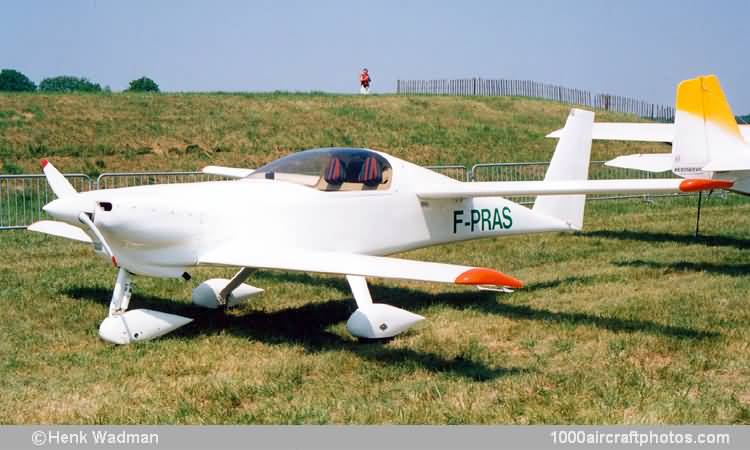11/30/2009. Remarks by Walter van Tilborg: "The Dragonfly was an original design, all-composite, two-seat homebuilt of Bob Walters and Al Nelson who established Viking Aircraft Ltd. for marketing of the type. The prototype was built by the designers, with a 45 hp VW1600, and had the main wheels in the tips of the canard wings and slight dihedral on the canard wings. and it made the first flight on June 16, 1980.
The aircraft was the winner of the 1980 EAA Outstanding New Design Award and in 1981 was re-engined with a 65 hp Hapi/VW 60-2. From 1982, the Dragonfly became available in plans or kit form and many aircraft were completed, with usually a Hapi or other VW-based engine in the 50-90 hp range. Production rights were, in 1984, acquired by Hapi Industries and several other variants were also developed.
The Dragonfly Mk.II had a modified landing gear, with the main wheels relocated to under the canard wing, which had no dihedral and the wingspan was slightly increased. The true prototype Mk.II was built by Hapi Industries and flown in 1984, but this aircraft had been preceded by a Mk.I, which was modified to Mk.II standard by its amateur constructor.
Also flown in 1984, the Dragonfly Mk.III featured a fixed tricycle landing gear. The prototype was built by TASK, in co-operation with Hapi. Not many Mk.3 aircraft were built. In 1989, the Viking rights were transferred to Mosler Airframe & Power Plants Company and in 1992 a new Viking Aircraft Inc. was established. From around 1999/2000, the Viking was marketed by Slipstream Industries, Inc. and during 2004 rights were purchased by the South African company Dart Industries International.
Examples of the Dragonfly were built in several countries including the UK, Canada, Germany, Holland and France. Aircraft were built with various engines, including modified Subaru Legacy car engine, Great Plans/VW, Hapi etc. By 2005, reportedly over 500 Dragonfly's had been completed or were under construction, while (also reportedly) up to some 3,000 kits were sold worldwide.
A slightly modified Mk.I version was developed by a team (including Bernhard Sünder, Karl Roskopf and Volker Cleeman) in Germany, to qualify under the homebuilt rules in that country. The aircraft was registered D-EJUL (c/n 01/82) in May 1983, under the designation Sünder T1/P Dragonfly. Named Libelle, the aircraft was powered by a 68 hp Limbach SL-1700-E, and appeared at the Hannover Luftfahrtschau in May 1984. The same year the registration was cancelled as the permit had expired on October 10, 1984. Presently the aircraft is on display at the Museum für Luftfahrt und Technik at Wernigerode, Germany."
